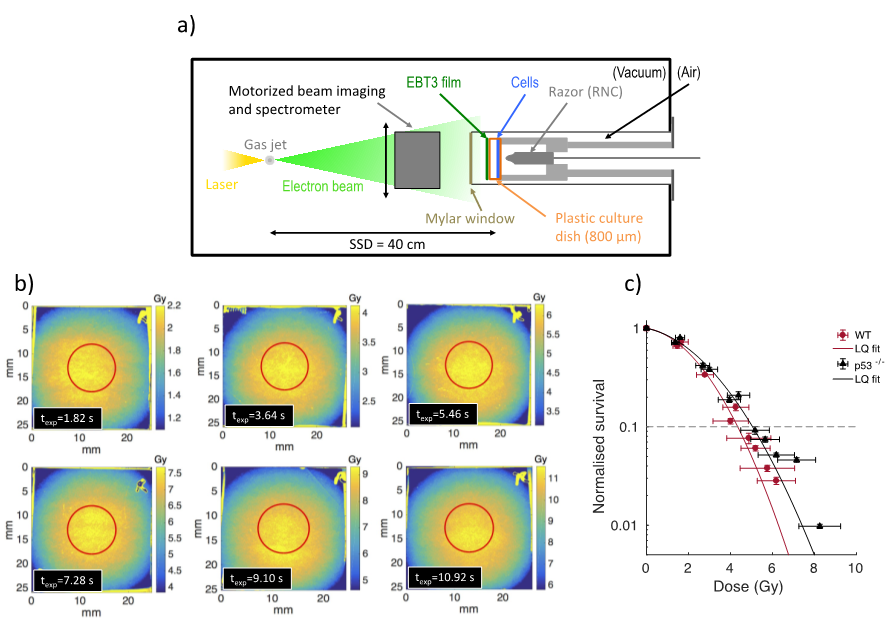Radiobiology with laser-accelerated electron bunches
The FLASH effect in radiotherapy is the fact that radiotoxicity for healthy tissues is reduced by delivering a therapeutic radiation dose killing cancer cells in very short and intense flashes, i.e. at a much higher dose-rate (~100 Gy/s) than conventional treatment protocols (~1 Gy/min). In order to take best advantage of this beneficial effect in future radiotherapy treatments, the underpinning radiation-damage mechanisms need to be elucidated. Laser-accelerated particles are ideal tools for this research exploring the effect of extreme irradiation conditions on living matter because their short pulse duration (fs-ps) enables extremely high peak dose rates of up to 1011 Gy/s to be achieved. However, radiobiology studies place stringent demands on the stability and reproducibility of the particle sources, which are not yet easily met.
We recently explored the use of the kHz laser-plasma electron source in LOA’s “Salle Noire” for radiation biology studies. In the first dosimetric characterisation of this type of source, we found good spatial stability of the delivered dose (see Figure 1.b) and a higher mean dose-rate than what could be achieved with more conventional 10-Hz laser-plasma accelerators. Our in-vitro survival assays (see Figure 1.c) on colorectal cancer cells (HCT116) confirm the robustness of the dosimetry protocol and pave the way for future innovative radiobiology studies with this source.



